Staying connected at all times is essential for the survival of any business. When you’re on the go or traveling or in an area with no mobile data, not having internet access sucks. Thanks to the advancement in wireless networking technology, the infrastructure to get free WiFi anywhere is booming. As long as you have a WiFi-enabled device, you can get connected anytime.
In the past, we agonized over the early dial-up internet years. The anticipation of waiting and then waiting again while the dialing-up tone signals that we’re almost there. One word – frustrating. Oh, and wires, so many of them. Thank goodness that we can now connect to the internet within seconds. A wireless internet connection makes things easy – speedy with no cords and wires.
Let’s take a look at how you can get free WiFi anywhere:
What Is a WiFi Hotspot?

A WiFi hotspot is a physical location where you access the internet through WiFi. However, connecting to a WiFi hotspot, especially in public places, exposes you to cyber security risks. Cybercriminals deem these WiFi hotspots their playground to capture wireless traffic and steal information.
That said, there will be 549 million public WiFi hotspots worldwide by 2022. The rapid rise in these networks shows their popularity due to high demand.
Can I Get Free WiFi Even at Home?
Depending on where you stay, you can get free WiFi at home. You are in for a treat if you live in an urban area surrounded by numerous Wi-Fi hotspots. However, if you live farther from the cities, you probably can’t get free WiFi at home.
That said, as long as you have strong reception and no issues enjoying a mobile data connection, you can create your personal WiFi hotspot and share it with other devices at home.
Here's How You Can Get Free WiFi Anywhere (Well, Almost Anywhere)
1. Look for a Public WiFi Hotspot
Look around and scour the surroundings for free WiFi hotspots. Public areas, including airports, restaurants, cafes, hotels, bus stations, train stations, shopping malls, libraries, cinemas, theaters, and small businesses, set up WiFi hotspots to provide free WiFi access to attract customers or purely as a value-added service.
If you walk into a cafe, you’ll have to buy at least a drink to access their WiFi hotspot. Or you can look for libraries, public plazas, and shopping malls if you do not wish to spend a single cent. However, since the masses are accessing the internet, don’t expect fast internet connection speed. Some of these public WiFi hotspots may require a password for access. Hence, ask around; people are willing to help.
2. Create a Private WiFi Hotspot
Instead of Googling or emailing on your friend’s behalf, you should create a private WiFi hotspot via your phone so that your friend has internet access. Just turn on your mobile data, and with minimal settings, you'll have created your private WiFi hotspot. While it isn’t free per se (since you are paying for the mobile data plan), at least you both enjoy internet access through an already available source.
Private WiFi hotspots are for a selected closed community of people to gain access to the internet. A business or a household usually sports one for wireless internet connection across devices. Only users with the provided password can join the network.
Use a complicated and hard-to-guess password (at least 12 alphanumeric characters long with special symbols) for your private WiFi hotspot to stop others from riding on your data plan. Take note that your device’s battery will deplete faster.
Private Hotspot on Android
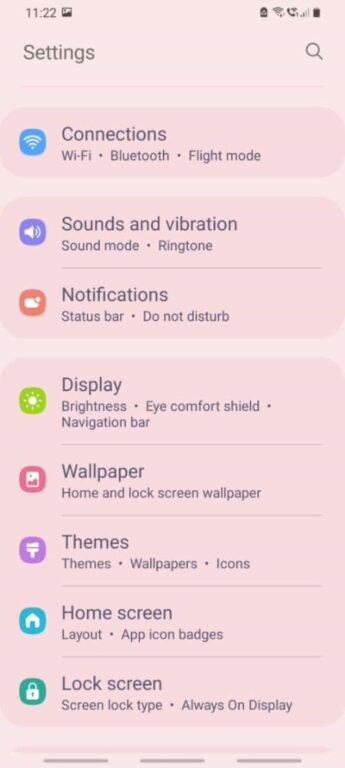
a. Go to ‘Settings’ and tap ‘Connections’.
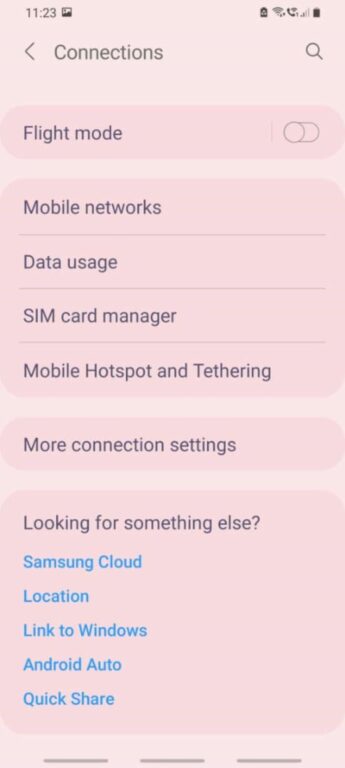
b. Tap ‘Mobile Hotspot and Tethering’.
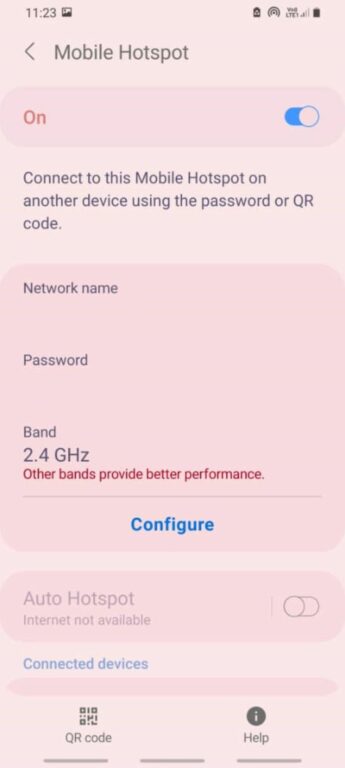
c. Enable and tap ‘Mobile Hotspot’. You can share the provided password or tap ‘Configure’ to change the network name and password. Share your password with only people you trust.
d. On the other device, go to ‘Settings’ > ‘Connections’. Look for the device name of the mobile hotspot, then input the password to connect.
Private Hotspot on iOS
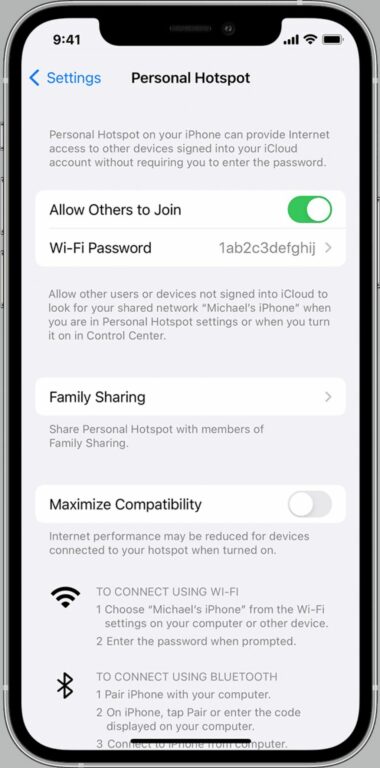
- Go to ‘Settings’ and tap ‘Cellular’.
- Tap ‘Personal Hotspot' or ‘Settings’ > ‘Personal Hotspot’. Ensure that it's on.
- Enable ‘Allow Others to Join’.
- On the device that you want to connect, go to ‘Settings’ > ‘Wi-Fi’.
Look for the iPhone in the list and tap the WiFi network to join. Enter the password to join.
3. Use Free WiFi apps
There are free WiFi apps that help find passwords of available open WiFi networks for you to connect. The content in these apps is usually user-generated. You’ll find these apps useful for their WiFi connection database information.
Wi-Fi Free Spot
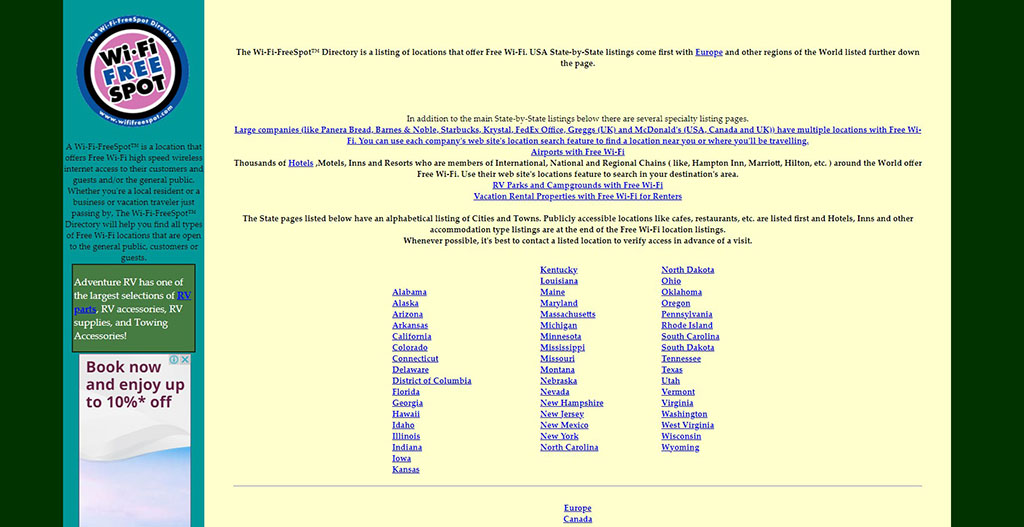
Wi-Fi Free Spot is a website with free WiFi public location information. You’ll first see the US state-by-state listings, then Europe and other regions (Canada, the Caribbean, Mexico, Central, and South America, the Middle East and Africa, Asia, Australia, New Zealand, and South Pacific) as you scroll further down.
The listings are then into cities/towns. The interface may look outdated, but the information inside isn't. You’ll first require an internet connection to access Wi-Fi Free Spot.
Wi-Fi Map
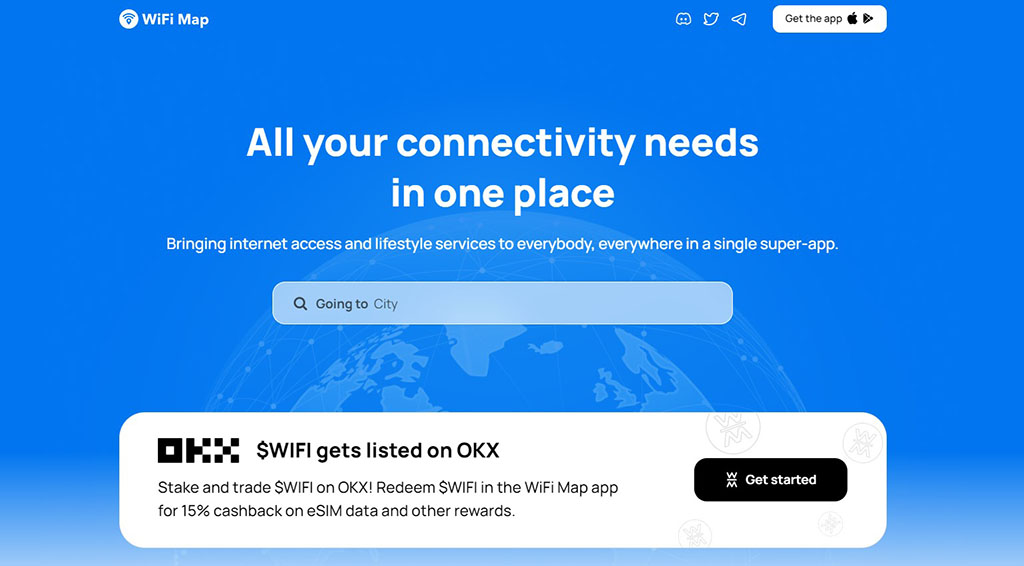
Wi-Fi Map gives you vast information on public WiFi access across the globe. You can access their website through Windows. Key in the city you wish to visit, and the available public WiFi locations appear. Wi-Fi Map has an Android and iOS app. You can gain access to millions of WiFi hotspots in over 200 countries.
You can also download maps for offline use. Should you encounter a place with no hotspots, you can purchase WiFi Map’s eSIM packages in over 70 countries. It is no wonder that WiFi Map is a leader in the market.
Instabridge

Instabridge is a Swedish company with a crowdsourced app that registers over 100,000 downloads a day. Its WiFi Map connects users to more than 20 million WiFi hotspots worldwide. A global telecom operator with a presence in over 190 countries, Instabridge offers eSIM, and high-speed internet access for smartphones via a digital SIM card.
Instabridge’s hotspot database app shines in its large free WiFi-sharing communities. Hence, it is updated to give you functioning WiFi hotspots.
4. Use a Portable Router
If you don’t mind spending on data and sharing with a couple of trusted people, consider getting a portable router. At least, you are assured of faster and uninterrupted connections wherever you go. Like your home router, a portable router works on a SIM card to connect to a 3G, 4G, or 5G network. It creates a WiFi network for several connections to the internet once connected.
The number of simultaneous connections usually depends on the price of your portable router. You won’t suffer bad connections unless you are in a poor network coverage area. Using a portable router isn’t technically free since you have to buy the router and the SIM card. However, if you’re always on the go, the convenience you reap makes up for the initial investment.
Be Careful, Public WiFi is Dangerous
Freebies usually come with a caveat. The same applies to free WiFi hotspots. ‘If you’re not paying, you're not the customer, you're the product', a saying that rings loud and true. Free WiFi hotspots are typically minefields for hackers to exploit.
Fake Public Hotspots
You found a public WiFi hotspot with a reputable business name with no password to connect. While you eagerly want to connect, I ask you to pause and think twice. Hackers often create fake public hotspots to bait people. They can even use a popular restaurant’s name to make it look legit.
However, once you connect, the hackers will have a field day remotely accessing your device and internet traffic. Some even install malware and packet-sniffing tools on your device. That’s it; you are exposed, and hackers have full access to your private information.
Hacking Attacks
Public WiFi is unsecured; this is one of the easiest ways for cybercriminals to capture your data. Hackers are on the prowl on the same network as you are. They secretly sniff your traffic and perform multiple malicious attacks to steal your personal information.
Using a weak password is a recipe for disaster for private WiFi hotspots. A hacker can easily hack your password and intercept your devices.
Questionable Free Wi-Fi apps
WiFi apps are not foolproof either. There’s always this possibility that the apps list fake hotspots. Hence, you should check the reviews and feedback before making the connection. Be vigilant, as you never know if the hotspots are genuine or by bad actors with malicious intentions.
Some WiFi apps auto-connect for you. Although this makes it convenient, it is best to disable this auto-connect feature. Do your due diligence first before connecting to any WiFi hotspots. The worst is automatically connected to a malicious WiFi hotspot, unaware.
Privacy Issues
Using public WiFi helps whenever you are in dire need of an internet connection. However, some providers track and profile you while connected to their network. For all you know, they use your data for other reasons you’re unaware of.
Some WiFi apps gather data about you to share with others. Hence, remember to read the app's privacy policy before using the app.
How to Use Public WiFi Safely
NordVPN Protects Your WiFi
NordVPN encrypts your data and connects you to secure servers wherever you're located. Try now with a 30-day money-back guarantee
There are many security and privacy concerns with public WiFi. However, there are ways you can employ to safeguard yourself when using public WiFi (perhaps, this explains the reason behind the rise in WiFi hotspots' popularity):
Use a Virtual Private Network
A Virtual Private Network (VPN) is essential to secure yourself on any public WiFi because it encrypts your data and masks your IP address. When you activate your VPN and connect to a public WiFi network, your connection becomes encrypted, so your data is safe within this secure tunnel. Also, your IP address is hidden, so nobody can trace it back to you since your point of origin is masked.
Some VPNs offer additional security features, such as a Kill Switch that immediately terminates your internet connection once your VPN drops. It is best to go for a trusted VPN with a verified zero-log policy based in a privacy-friendly region with no data retention laws.
Turn On your Firewall
Enabling your firewall is a necessary defense mechanism setup when on public WiFi. Of course, your connection speed may suffer, but you gain an additional security layer to monitor and control incoming and outgoing network traffic. Based on predetermined security rules, a firewall acts as a barrier to safeguard yourself.
Pay Attention to Pop-ups
Sometimes when you connect to a WiFi network, you’ll encounter multiple pop-ups. While they can be annoying, you must go through the pop-ups individually and not simply speed through them.
Read the pop-ups carefully; you might see a pop-up requesting your permission to trust and share information within the network. Do not simply allow public network sharing. Unless you are sure that you can trust the said network, disable public network sharing.
Be Careful What You Transact
You should avoid performing financial transactions or anything with your sensitive information unless you have no choice. Lean towards ‘harmless’ browsing to be on the safe side. Remember, if you can easily access the WiFi, others can too.
Do Not Use Auto-Connect
There are so many WiFi hotspots around; your job to identify those that are legit becomes more challenging. That said, do the necessary due diligence before connecting to any. If you enable WiFi auto-connect, you onboard any available WiFi hotspots that could be fake and dangerous. Hackers’ jobs become much easier when you activate the WiFi auto-connect feature.
Getting Free WiFi Anywhere is Possible
Public WiFi can be a lifesaver, but they come at a price; they are unsecured. Also, WiFi hotspots are not created equal. While some are configured with better security settings, others are not. The allure of free WiFi is understandable, but this is not worth the potential cost of a cybersecurity incident.
That said, there are ways to secure your public WiFi. Hence, no matter how you get free WiFi, always employ the relevant safety best practices to safeguard your connections for total peace of mind.
Also Read;